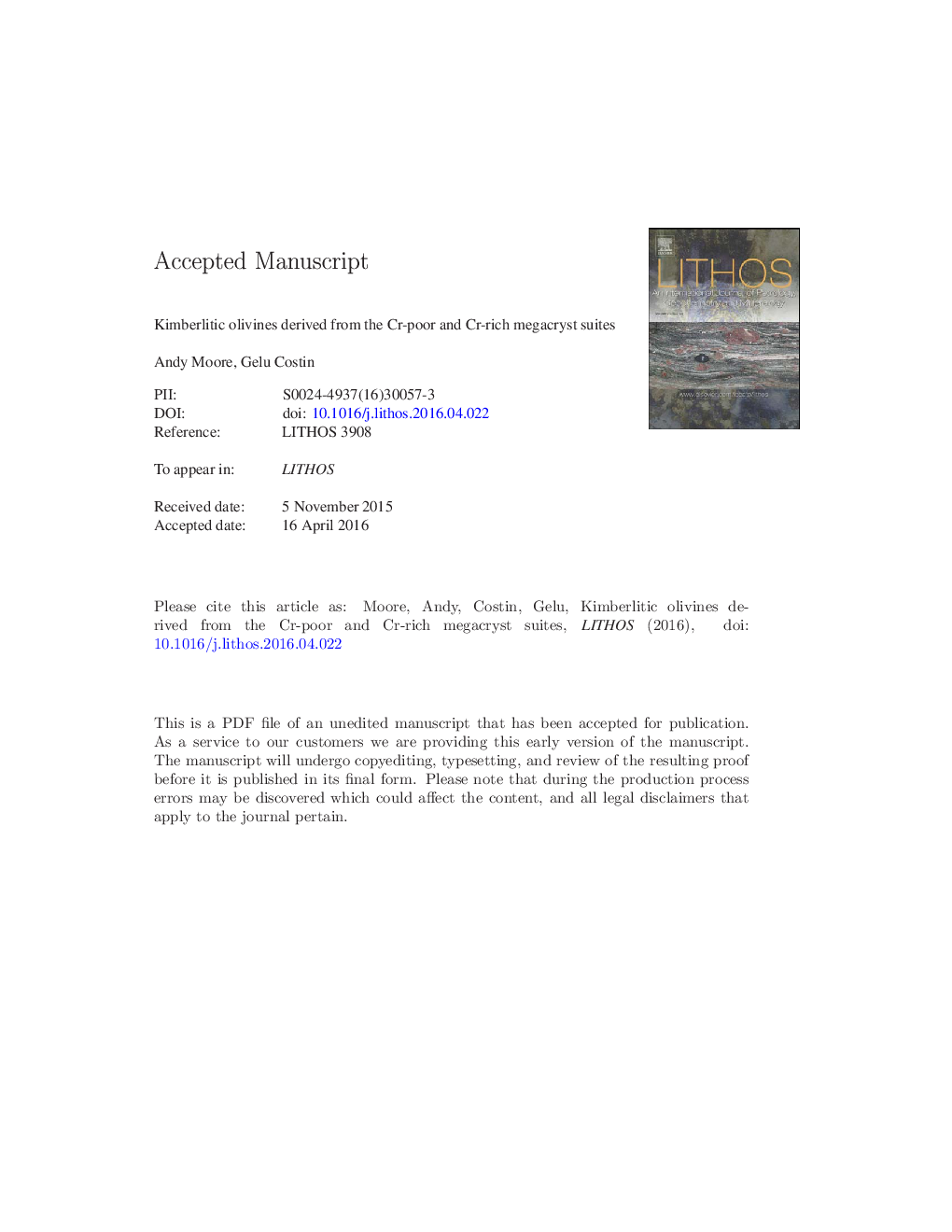| Article ID | Journal | Published Year | Pages | File Type |
|---|---|---|---|---|
| 6440441 | Lithos | 2016 | 48 Pages |
Abstract
Reversed-zoned olivines (Fe-richer cores compared to rims), appear to be ubiquitous in kimberlites with a wide distribution. These olivines generally comprise a subordinate population relative to the dominant normally zoned olivines. However, they are notably more abundant in the megacryst-rich mid-Cretaceous Monastery and early Proterozoic Colossus kimberlites, located on the Kaapvaal and Zimbabwe cratons, respectively. The reverse-zoned olivines at these two localities define compositional fields that are closely similar to those for two olivine megacryst populations of the Cr-poor association which have been documented in the Monastery kimberlite. This points to a genetic link between megacrysts and the reversed zoned olivines. The ubiquitous, occurrence of the Fe-rich (relative to the field for rims) olivines in kimberlites with a wide geographic distribution in turn argues for an intimate link between megacrysts and the host kimberlite. Some large olivines have inclusions of rounded Cr-rich clinopyroxenes, garnets and/or spinel, characterized by fine-scale, erratic internal compositional zoning. Olivines with such chemically heterogeneous Cr-rich inclusions are not derived from disaggregated mantle peridotites, but are rather linked to the Cr-rich megacryst suite. Consequently, they cannot be used as evidence that cores of a majority of kimberlitic olivines are derived from disaggregated mantle peridotites.
Related Topics
Physical Sciences and Engineering
Earth and Planetary Sciences
Geochemistry and Petrology
Authors
Andy Moore, Gelu Costin,
